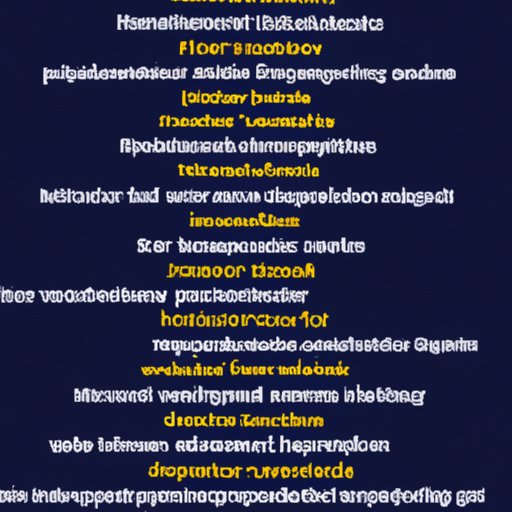Introduction
Antidepressants are medications used to treat depression, anxiety disorders, and other mental health conditions. They work by altering the levels of certain neurotransmitters, such as serotonin, norepinephrine, and dopamine, in the brain. While antidepressants can be highly effective in treating depression and other mental health issues, it is important to understand how they work and the potential side effects associated with their use.
Exploring the Types of Antidepressants and How They Work
There are several different types of antidepressants available, each with their own mechanism of action. Selective Serotonin Reuptake Inhibitors (SSRIs) are the most commonly prescribed type of antidepressant. SSRIs work by blocking the reabsorption (reuptake) of serotonin, a neurotransmitter that has been linked to feelings of well-being and happiness, in the brain. This increases the level of serotonin available in the brain, which can improve mood.
Tricyclic antidepressants (TCAs) are another type of antidepressant that work by blocking the reuptake of both serotonin and norepinephrine, two neurotransmitters involved in regulating mood. Monoamine oxidase inhibitors (MAOIs) are a third type of antidepressant that work by inhibiting the enzyme monoamine oxidase, which breaks down serotonin, norepinephrine, and dopamine in the brain. Finally, atypical antidepressants are a class of drugs that have unique mechanisms of action and may affect multiple neurotransmitters in the brain.

Examining the Neurotransmitter Changes Associated with Antidepressant Use
The primary mechanism of action for most antidepressants is to increase the levels of certain neurotransmitters in the brain. Serotonin is one of the most important neurotransmitters involved in regulating mood, and its levels can be increased by SSRIs, TCAs, and MAOIs. Norepinephrine is another neurotransmitter that is involved in regulating mood, and its levels can be increased by TCAs and MAOIs. Dopamine is a third neurotransmitter that is involved in regulating mood and behavior, and its levels can be increased by some atypical antidepressants.

An Overview of the Side Effects of Antidepressants
Like any medication, antidepressants come with potential side effects. Common side effects of antidepressants include nausea, headache, dry mouth, insomnia, and weight gain. Less common side effects include blurred vision, dizziness, sexual dysfunction, and sweating. It is important to speak with your doctor about any side effects you may be experiencing.
Investigating the Biological, Psychological, and Social Factors that Influence Antidepressant Response
In addition to understanding the types of antidepressants and their mechanism of action, it is important to understand the biological, psychological, and social factors that may influence an individual’s response to antidepressant treatment. Genetics, stress, and environment all play a role in determining how an individual will respond to antidepressant treatment. It is important to take these factors into account when considering antidepressant treatment.

Investigating the Risks and Benefits of Taking Antidepressants
As with any medication, there are both potential risks and potential benefits associated with taking antidepressants. Potential risks include the risk of developing serious side effects and the risk of addiction or dependence. Potential benefits include improved mood, reduced anxiety, and better overall functioning.
Understanding the Role of Therapy in Combination with Antidepressant Treatment
In addition to taking antidepressants, many individuals find that combining antidepressant treatment with therapy can be beneficial. Cognitive behavioral therapy (CBT), interpersonal therapy, and supportive psychotherapy can help individuals identify and address the root cause of their depression or anxiety. These therapies can also provide additional support and guidance during the course of antidepressant treatment.
Summary
In this article, we explored how antidepressants work, the types of antidepressants available, the neurotransmitter changes associated with antidepressant use, the potential side effects of antidepressants, and the biological, psychological, and social factors that influence antidepressant response. We also discussed the potential risks and benefits of taking antidepressants, as well as the role of therapy in combination with antidepressant treatment. While antidepressants can be an effective treatment option for depression and other mental health issues, it is important to understand how they work and the potential risks and benefits associated with their use.
Conclusion
Antidepressants can be an effective treatment option for depression and other mental health issues, but it is important to understand how they work and the potential risks and benefits associated with their use. It is also important to consider the biological, psychological, and social factors that may influence an individual’s response to antidepressant treatment, as well as the role of therapy in combination with antidepressant treatment. By understanding how antidepressants work, individuals can make informed decisions about their treatment options.
(Note: Is this article not meeting your expectations? Do you have knowledge or insights to share? Unlock new opportunities and expand your reach by joining our authors team. Click Registration to join us and share your expertise with our readers.)
